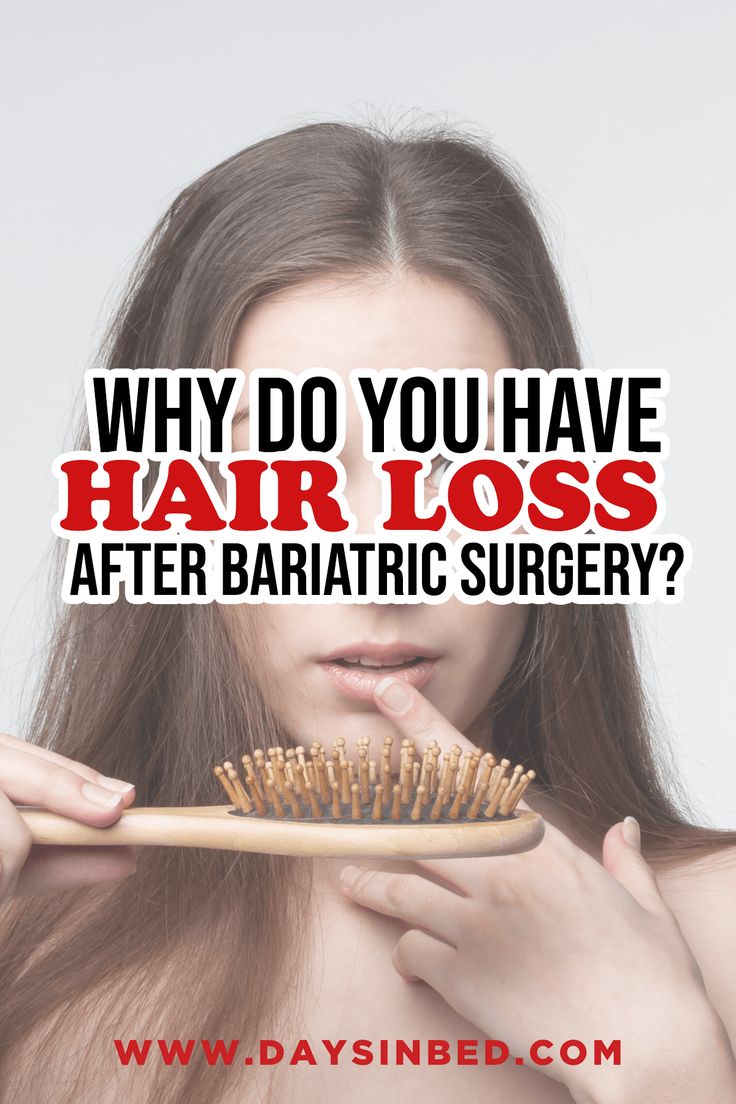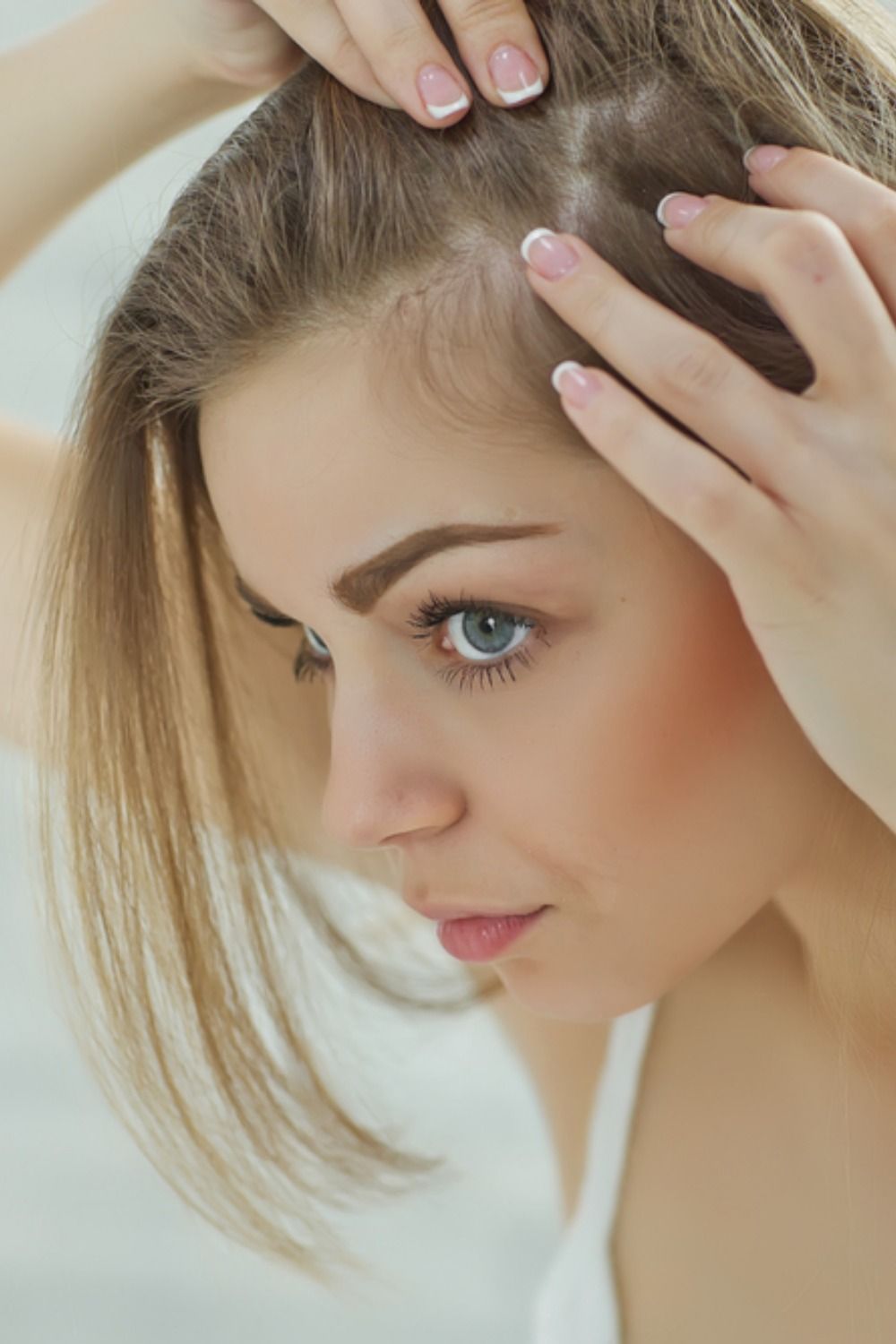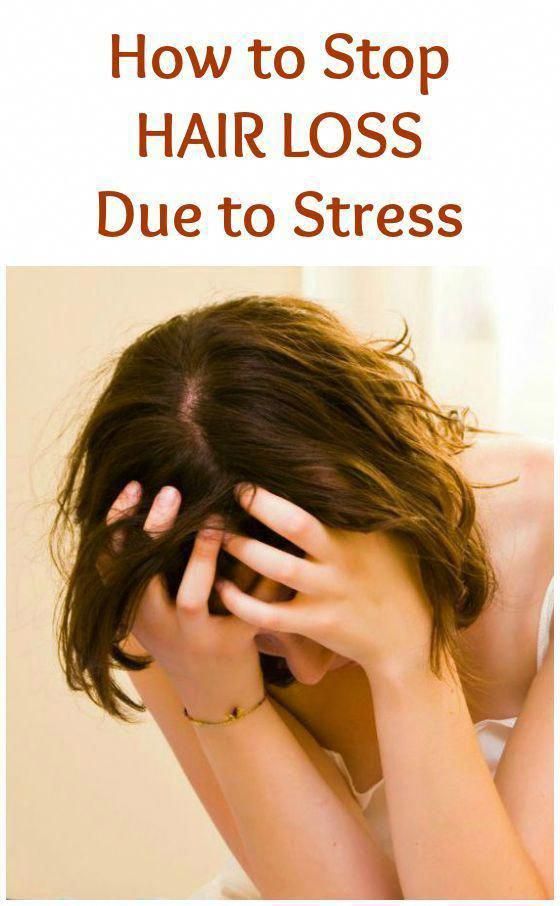Different Types Of Alopecia
Alopecia is the medical term for hair loss, and there are two main types: alopecia areata and androgenic alopecia. Alopecia may cause hair loss only on the scalp or all over the body. It may result in thinning hair, patches of hair loss, some balding, or total baldness, and it may be permanent or temporary. There are numerous causes, including genetics. Talk to your doctor about possible treatments.
Points To Remember About Alopecia Areata
- Alopecia areata causes hair loss, usually on the head and face.
- The disease is different for each personsome peoples hair grows back fully, while it does not in others.
- There is no cure for alopecia areata, but there are treatments that help hair grow back more quickly.
- You can do many things to cope with hair loss, such as wearing hats or hair pieces and seeking support from others if you feel anxiety or depression.
You Have Female Or Malepattern Baldness
You might already know about malepattern baldness, a type of hair loss caused by a combo of genes and male sex hormones that usually makes the hair on a man’s head recede at the temples, leaving an Mshaped hairline.
But hormone-related hairloss for femalesor femalepattern baldnessis also a thing, according to the US National Institute of Health. This type of hair loss occurs when the hair follicle shrinks so much over time that it doesn’t grow new hair. In women, the symptoms of femalepattern baldness includes a widening of the center hair part, and, sometimes, coarser hair on the face.
The only FDAapproved treatment for female and malepattern hair is minoxidil , but if that doesn’t work, your doctor may prescribe oral medications such as finasteride that can halt hair loss or even cause some to grow surgery to transplant or graft hair is also an option.
Also Check: How To Treat Dry Thin Frizzy Hair
Women And Hair Loss: Coping Tips
Losing your crowning glory can be particularly difficult for women. But there are ways to cope.
Losing your hair as a woman, especially if you’re young or at a vulnerable time in your life, can badly affect your confidence.
Hair loss, known medically as alopecia, is fairly common. It’s estimated, for instance, that around 40% of women aged 70 years or over experience female-pattern baldness the most common type of hair loss, which is thought to be inherited.
Diffuse Thinning In Girls

Depending on the cause, males and females can typically lose their hair in very different ways . As we saw, boys often show their first sign of hair loss at the hairline and temples.
While women can also recede in the temples, their hair loss is more often diffuse. In other words, they retain a relatively intact hairline but thin all over the top of the head. The main sign of this is a wide part.
At first, such thinning can go unnoticed. By the time girls realize that their hair is thinner and the part wider, they might have lost most of the hair on their head. Unlike males, however, it is extremely rare for girls and women to go completely bald.
Don’t Miss: How To Cover Front Hair Loss
Are There Complications/side Effects Of Treatment
Minoxidil may irritate your scalp and cause dryness, scaling, itching and/or redness. See your dermatologist if this happens.
With Minoxidil you might also see hair growing in other places other than your scalp . Wash your face after you apply Minoxidil and make sure you avoid other areas when you apply it.
Opt For Hair Health Supplements
You can boost your hair repair process by consuming hair health supplements. Antioxidants such as vitamins A, E, C fight oxidative stress and help your body heal faster. Biotin or vitamin B7 is important for producing keratin, a protein which forms the structure of your hair. Most Indian women have iron deficiency. In such a case, taking iron supplements may help control your hair loss much faster. Zinc too plays an essential role in repair of hair tissue. Other important nutrients that you can supplement are protein, vitamin D and fish oil.
Don’t Miss: How To Hide Hair Loss Female
Chemotherapy And Hair Loss
Certain chemotherapy medicines used to treat breast cancer can cause the hair on your head to become thin or to fall out completely. Some chemotherapy medicines can also cause hair loss on other parts of your body, such as your eyebrows and eyelashes, pubic hair, and hair on your legs, arms, or underarms.
Whether you lose your hair and how much you lose depends on a variety of factors. This includes the type, combination, and dose of chemotherapy medicines you get, as well as other medical conditions , nutrition status, and stress. The timing of chemotherapy treatments also affects hair loss. Some types of chemotherapy are given weekly and in small doses, which may minimize hair loss. Other types of chemotherapy are scheduled every 3 to 4 weeks in higher doses and may be more likely to cause more hair loss.
Talk with your doctors before chemotherapy begins so you know what to expect in your individual situation. If you find out that you will be receiving chemotherapy medicines that are likely to cause hair loss, you may want to look into the possibility of using a scalp cooling system or manual cold caps during your infusion sessions to help limit the amount of hair you lose. Read more about preventing hair loss with Cold Caps and Scalp Cooling Systems.
Some of the chemotherapy medicines used to treat breast cancer that can cause hair loss are:
Scarves Hats And Turbans
Many people find that scarves and hats are the easiest, most comfortable, and versatile solution for managing hair loss from breast cancer treatment. Scarves and hats can hide your hair loss, help keep you warm, protect you from the sun, and they can be stylish and fun to wear. Learn more about Scarves, Hats, and Turbans for managing treatment-related hair loss.
Recommended Reading: What Drugs Cause Hair Loss
What Are The Earliest Symptoms Of Telogen Effluvium
It is perfectly normal to lose up to 100 hairs per day. In telogen effluvium, people may lose closer to 300 hairs per day, and this can continue over the course of several months. You may notice that more hair falls out while brushing or when washing your hair in the shower. You may also notice thinning of your hair.
What You Need To Know About Hair Loss
If your condition is not due to a hormonal imbalance, your doctor may recommend treatment that includes topical corticosteroids. Topical corticosteroids may lead to red or puffy face and can reduce your immune systems ability to fight infection. In some cases, fungal infections, such as tinea capitis, can lead to hair loss. Fortunately, you can take antifungal medications to treat it and get a full head of hair again.
Hair loss is a normal part of aging, and there is no need to worry. In fact, it is perfectly normal for most people to lose a bit of hair every day, and it will grow back eventually. Some men and women experience hair loss as they age, while others simply have a genetic predisposition to the problem. If youre experiencing a lack of hair, you may have a weakened immune system, which can lead to hair loss.
For more severe cases of hair loss, a dermatologist may recommend a hair transplant. This procedure involves a surgeon removing plugs of hair from your scalp. It may take several hours and multiple sessions to complete the process. Its an invasive treatment, and may not be the best option for everyone. Your doctor will need to examine your scalp to determine the cause of your condition. In addition to a healthy diet, your doctor may recommend taking supplements of various vitamins and minerals.
Don’t Miss: Is Aloe Vera Good For Your Hair Loss
You Have A Thyroid Condition
Thyroid conditionslike hyperthyroidism and hypothyroidismcan cause a range of hair issues, according to the American Academy of Dermatology.
Those include: thinning or missing eyebrows , soft and fine hair with lots of shedding, thinning hair, and less hair on other body parts.
Of course, if you have experienced hair loss with a thyroid issue, the best bet is to speak with your doctor about treatment possibilitiesbut usually, treating the underlying cause first is essential to treating any other associated issues.
Is There A Test For Alopecia Areata

There is no single test to tell you if you have alopecia areata. Doctors usually see if you have the disease by:
- Looking at the areas where the hair has been lost and at your nails.
- Looking at your hair and hair follicle openings.
- Asking about your medical and family history.
- Ordering blood tests or other lab tests.
You May Like: Does Lanreotide Cause Hair Loss
How To Prepare For Hair Loss
- Each person is different. Ask your health care team if hair loss is likely to happen. If it is, ask if it will happen quickly or gradually.
- If you are going to get chemotherapy that might cause hair loss, talk to your health care team about whether a cooling cap might help reduce your risk. More research is being done to understand how effective and safe cooling caps may be. There are some side effects of cooling caps to consider, such as headaches, scalp pain, and neck and shoulder discomfort. Talk to your health care team about the benefits, limitations, and side effects of cooling caps.
- If the thought of losing your hair bothers you, you might choose to cut your hair very short or even shave your head before it starts falling out.
- If you think you might want a wig, buy it before treatment begins or at the very start of treatment. Ask if the wig can be adjusted you might need a smaller wig as you lose hair. To match hair color, you can cut a swatch of hair from the top front of your head, where hair is lightest..
- Wigs and other scalp coverings may be partially or fully covered by your health insurance. If so, ask for a prescription for a cranial prosthesis. Do not use the word wig on the prescription.
- Get a list of wig shops in your area from your cancer team, other patients, or from the phone book. You can also order the American Cancer Societys tlc Tender Loving Care® catalog by visiting tlc or by calling 1-800-850-9445.
What Does Inherited Hair Loss Look Like
Inherited hair loss is the most common cause of hair loss. It is inherited from either or both the mother and the father.
- In men, hair loss occurs on the scalp above the forehead and on the top of the head. Bald spots are noticeable.
- In women, hair loss occurs as thinning of the hair all over the scalp, but mostly on the top of the head. Women tend to keep their front hairline and do not generally develop bald spots.
Also Check: What Kind Of Doctor Should I See For Hair Loss
Infections That Cause Hair Loss
A number of infections and illnesses can lead to hair loss. An infection that causes a high fever, a fungal skin infection, and bacterial infections like syphilis can all be responsible for balding or thinning hair. Treating the underlying infection can restore hair growth and prevent future hair loss. So your first step is to seek medical attention for the primary health problem.
You’re Getting Too Much Vitamin A
Overdoing vitamin A-containing supplements or medications can trigger hair loss, according to the American Academy of Dermatology. Just FYI: The Daily Value for vitamin A is 5,000 International Units per day for adults and kids over age 4 supplements can contain 2,500 to 10,000 IU. So any more than that and you could risk some strands falling out.
The good news: This is also a reversible cause of hair loss, and once the excess vitamin A is halted, hair should start growing normally again.
Don’t Miss: What’s The Best Hair Oil For Hair Loss
Cosmetic Options For Hair Loss
When medical treatments fall short, women can also consider cosmetic options to make up for lost hair, such as wearing a wig. At the other end of the spectrum is hair transplantation, a surgical procedure that moves active follicles from the back of the scalp to areas where the hair is thinning. Once transplanted, the hair grows normally.
Hair transplantation is typically performed as an outpatient surgical procedure. In appropriate patients, it can be extremely successful, but it wont work for everyone, says Dr. Scott. One drawback is the expense: it can cost thousands of dollars and is not covered by insurance. The procedure also requires recovery time. And it may not be appropriate for women who have diffuse thinning across the whole scalp. Its more effective in treating smaller, more defined areas of balding.
Medications To Treat Hair Loss
Treatment depends on the underlying cause, says Dr. Scott. Sometimes simply addressing a medical condition prompting hair loss will be enough for the hair to regrow. In other instances, a woman might consider a medication like minoxidil , which helps with certain types of hair loss, or another treatment to replace or regrow lost hair.
A newer option being used to treat hair loss is platelet-rich plasma injections. For this treatment, the doctor draws your blood, divides it into its separate components, recombines the blood fluid with a high concentration of platelets , and introduces the resulting preparation back into the scalp.
The science on this isnt totally worked out. We still dont completely understand the mechanism behind PRP, but growth factors contained in platelets can stimulate regeneration of hair follicles and other tissues as well, says Dr. Scott.
In addition, low-level LED laser lights have been found to be helpful in regrowing hair in some cases. Its likely that even more treatments will be developed in the near future.
Read Also: Does Retinol Cause Hair Loss
Natural And Alternative Therapies
According to the National Institute of Arthritis and Musculoskeletal and Skin Diseases , alternative therapies may not help hair regrow and many are not supported by medical research. However, other treatments that reportedly improve alopecia areata include Chinese herbs, acupuncture, zinc and vitamin supplements, evening primrose oil and aroma therapy.
Viviscal, a natural supplement, has also shown more hair growth in men compared to those who took fish extract in clinical trials, Day said.
The NIAMSD recommends discussing any alternative treatments with physicians before use.
And Here’s What You Can Do To Fix It:

Ok, so now you know what triggering the hair loss, here’s how to deal with it…
Recognise the problem
Hair loss doesn’t happen fast, our strands grow in cycles, which means it can take up to 3 months for hair to fall out after a trigger has caused it. “If you notice excessive daily hair shedding for longer than 3 months, see a trichologist or your GP, there could be an underlying factor that needs to be addressed”, Anabel advises. “Very importantly, try not to panic. Telogen effluvium is almost always self-eliminating and hair will start to grow back as usual once any internal imbalance is put right”.
Change up your diet
1) Get More Protein
“Hair is made of protein, making adequate daily intake of protein rich foods essential. Include at least a palm sized portion of protein at breakfast and lunch .” Anabel recommends.
2) Complex carbohydrates are essential
“They provide our hair with the energy it needs to grow. Snack on a healthy carbohydrates if longer than four hours is left between meals as energy available to hair cells drops after this amount of time.”
That being said, Anabel explained that if you are losing your hair because of something other than diet, like stress or an illness, changing what you eat will not remedy it.
Take a supplement
Anabel recommends looking out for the following ingredients: Iron, Vitamin C, Vitamin B12, Vitamin D3, Copper, Zinc, Selenium, and the essential amino acids, L-Lysine and L-Methionine.
Head message = more than self-care
Recommended Reading: What Do I Do If My Hair Is Thinning